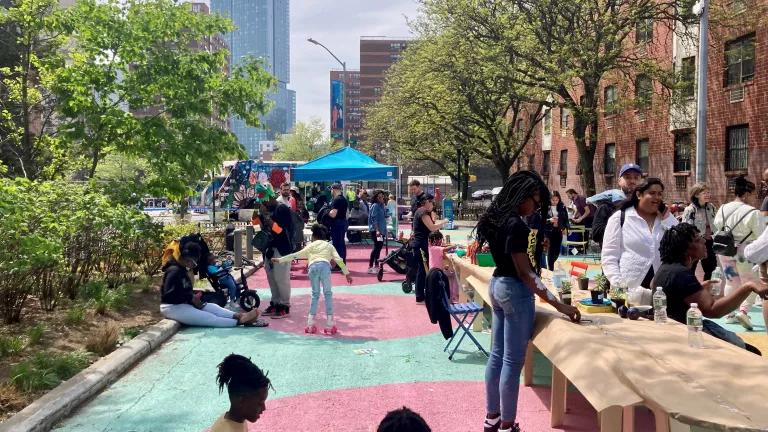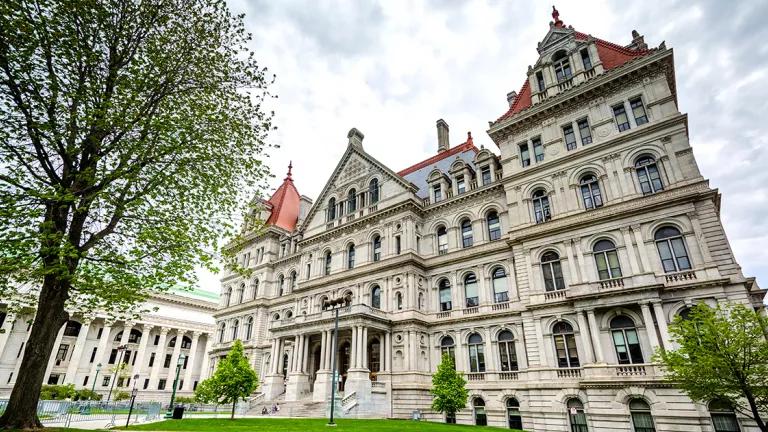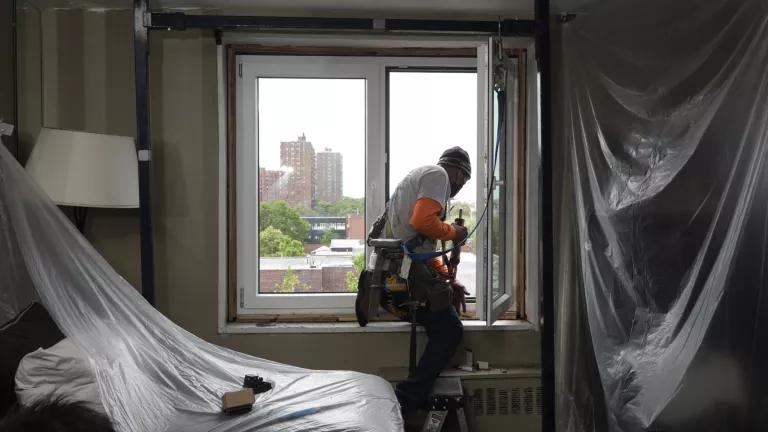Smaller Cities Like St. Louis Lead on Energy Efficiency

St. Louis passed its highly ambitious Building Energy Performance Standard (BEPS) ordinance, making it the fourth jurisdiction in the United States and first in the Midwest to do so. Mayor Lyda Krewson is expected to officially sign the ordinance into law in the coming weeks. With the adoption of this policy, the city will accomplish a major goal in creating more energy-efficient buildings.
What’s more, as a city of just over 300,000 residents, St. Louis is setting an example for other cities of all sizes, by demonstrating that it can drive climate action and unlock a wide range of associated benefits for building owners and the entire St. Louis community, even amid the COVID-19 outbreak.
What Is a Building Energy Performance Standard and Why Is It Important?
A Building Energy Performance Standard (BEPS) is a powerful policy tool cities can use to achieve their climate commitments by reducing energy and emission impacts of buildings. A BEPS requires a city to meet specific energy-saving targets that are strengthened over time.
St. Louis’ BEPS builds on existing legislation that requires building owners to measure and report their energy use. Similar to the city’s Building Energy Awareness benchmarking ordinance, the energy-saving changes called for by BEPS would only be required for buildings over 50,000 square feet.
It’s a decisive, ambitious step in climate action because buildings make up a large part of greenhouse gas emissions globally. In St. Louis, they account for nearly 80 percent of greenhouse gas (GHG) emissions, according to the city’s latest GHG Inventory.
The BEPS policy is an opportunity to drastically improve conditions indoors and outdoors. The city can expect cleaner air, reduced pollution, and improved public health with each energy efficiency upgrade. These upgrades reduce the amount of power that must be generated by fossil fuels and their associated polluting and climate-warming emissions.
Additionally, energy-efficient buildings cut utility and operating costs for residents and building owners alike. The BEPS ordinance will contribute to more equitable economic, public health, and workforce outcomes associated with meeting the city’s GHG reduction goal of reducing emissions 100 percent by 2050.
St. Louis Goes a Step Further in BEPS Leadership
Compared to other jurisdictions that have already adopted a BEPS policy, the City of St. Louis has set itself apart with the creation of a Building Energy Improvement Board, which will foster regional, energy-improving investments in buildings. These could include replacements to heating, ventilation, and air conditioning systems as well as upgrades to lighting and elevators, taken as examples.
This board is unique to St. Louis’ BEPS policy and will include nine members from diverse, local stakeholder groups such as utilities, labor, affordable housing owners and tenants, and commercial buildings. They will help ensure compliance among buildings performing below the standard and, for buildings unable to meet the standard, consider owner-submitted alternative compliance plans on a building-by-building basis.
Additionally, the board will create a more ambitious 15-year-compliance pathway for buildings that stand to benefit from deep energy improvements and can achieve energy performance well beyond the required performance standard.
Why Is This Beneficial to St. Louis?
The move to adopt a BEPS policy is a measure that will prove valuable economically and environmentally. The local economy will see an uptick in sustainable jobs from building improvements by building owners, and building owners and residents can expect significantly reduced costs in energy-efficient buildings. This ordinance will stimulate economic growth and cleaner air, both of which are much needed in the wake of economic uncertainty amid the COVID-19 respiratory disease outbreak.
Other benefits for St. Louis residents from the adoption of the BEPS policy include:
- Cost Savings: While an initial investment may be required, energy efficiency improvements pay back quickly and result in significant operational cost savings over time. The savings incurred from the BEPS ordinance will go directly to St. Louis residents and businesses and will also help preserve the city’s existing building stock.
- Smarter Buildings: Improving building performance enables building owners an opportunity to capitalize on new technologies and operational practices that allow their buildings to be more responsive to daily demands and conditions, thus becoming more productive and affordable.
- A Stronger Local Economy: The BEPS ordinance will help add to the estimated 42,000 jobs in Missouri’s energy efficiency industry by creating new jobs for local energy auditors, architects, engineers, electricians, plumbers, roofers, technicians and other contractors who sell energy-efficient services, products, and technologies.
- A More Resilient St. Louis: Investing in building energy improvements enables them to operate better, be more durable, and better withstand the more frequent extreme weather events associated with climate change.
- A Cleaner, More Productive Energy Supply: A thoughtfully set standard will improve energy use across all buildings to better enable and support our local utilities’ transition to a low- and no-carbon renewable energy supply.
- Increased Capacity for Electricity: As the city transitions to greener energy, it is still dependent on an electric grid that can be overwhelmed due to overuse. Energy efficiency updates relieve grid capacity, increasing grid stability for providing electricity to all St. Louis residents.
St. Louis’ Continued Excellence in Climate Action Leadership
St. Louis is one of 25 cities selected to participate in the American Cities Climate Challenge, an effort to provide resources to cities so they can take strong action to reduce pollution that contributes to climate change and affects public health. As part of the challenge, St. Louis has pledged to take bold action to reduce emissions 100 percent compared to its 2005 levels. Working with other cities, both in the Climate Challenge and around the world, St. Louis has consistently adopted methods to equitably reduce buildings’ carbon impact and give residents more economic opportunity, improve air quality, and reduce greenhouse gas emissions.
With the passage of this ordinance, and the citywide benchmarking ordinance that preceded it, St. Louis continues to lead the way across the Midwest and the United States for adopting policies that contribute to a cleaner, greener, economically vibrant city. St. Louis will be the first in the Midwest and fourth in the nation—following in the footsteps of New York City, Washington, D.C., and Washington State—to adopt a Building Energy Performance Standard policy.
It’s clear St. Louis is taking a leadership role in climate action and there will be even more sustainability policies to come in order as the city works to reach its climate goals by 2050.


